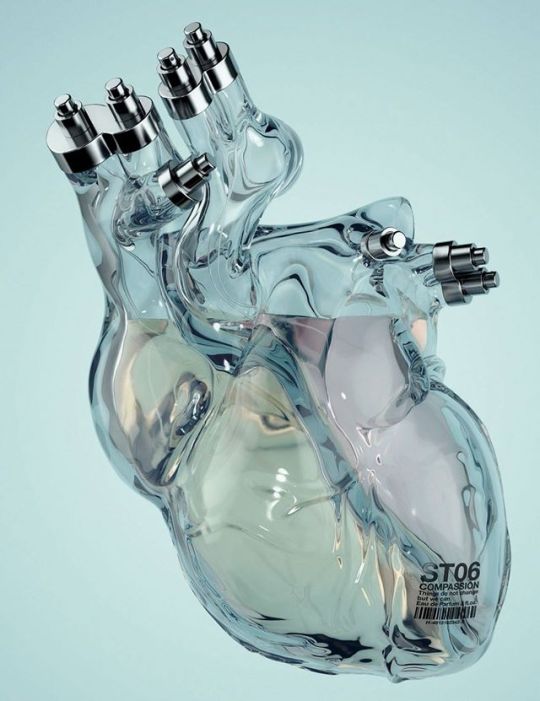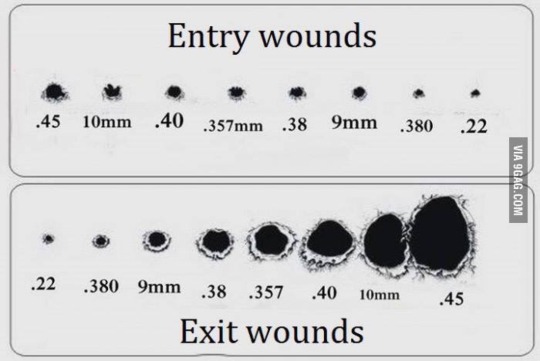My secondary blog where all my med related stuff goes... MD...taking it one day at a time... "Lesson to be learned – treat everybody as if they have Korsakoff’s, we all lie anyway."
Don't wanna be here? Send us removal request.
Text
pls let me just pass this exam

72 notes
·
View notes
Video
youtube
“How do you know you have a brain tumor?”
“I googled it.”
“Well then you should google how to cure it!”
191 notes
·
View notes
Text
WHEN MY DAD ASKED HOW MY FIRST OFFICIAL STEP 1 STUDY DAY WENT

49 notes
·
View notes
Photo

Sensory Dermatomes
Be careful not to confuse S1,S2 which is your achilles heel, to S3 which is your genitals (which some may consider mens figurative achilles heel). :D
728 notes
·
View notes
Photo

2016: Cactus disease
View full case >> http://goo.gl/DjykgU
Paleo-induced mineral periostitis (PiMP) is a recently recognised disease attributed to the so-called “paleo diet”. It most frequently involves the metacarpals and phalanges producing perpendicular periosteal projections (“spines”), an appearance that has lead to the alternative name of “cactus disease”. In severe cases the spines can tent the skin and present clinically, although the majority of cases are only detected radiographically after patients complain of hand pain, particularly when squeezing fruits (e.g. crushing goji berries).
Proponents of the paleo diet continue to deny that it causes PiMP, however a strong temporal association and correlation between length of diet and disease severity have proved scientifically robust; 2016 Cochrane Library metareview. Supportive archeological evidence from paleolithic human populations also exists including cave paintings in Argentina showing cactus hands 12,000 years ago (pictured above).
The European Society for Hand Models recently listed the paleo diet as a category 5 risk (alongside wood work, wicket keeping and thumb wrestling) after founding member Spike E. Hanzenfeat announced that his once “really really, ridiculously good looking hands�� had been “internally shashlicked” within seven months of commencing the diet. A Broadway adaptation of his story entitled “The Stuff Fools Swallow” is expected in late 2017.
192 notes
·
View notes
Photo

(via FFFFOUND! | The Gastrointestinal System Represented As A Subway Map | Laughing Squid)
5K notes
·
View notes
Text
Total Anomalous Pulmonary Venous Return (TAPVR)
In an anatomically normal heart, the pulmonary veins connect to the left side of the heart and provide oxygen-rich blood to the body. In TAPVR, the pulmonary veins connect….well, not there.

TAPVR is known for it’s “snowman sign” on chest xray, as the abnormal veins and heart together look a bit like a snowman.
There are three types of TAPVR: supracardiac, cardiac and infracardiac.
In supracardiac TAPVR, the pulmonary veins connect to the superior vena cava (which carries oxygen-poor blood from the body back to the heart). Oxygen-rich blood from the pulmonary veins mixes with oxygen-poor blood from the SVC.

In cardiac TAPVR, the pulmonary veins connect directly to the right atrium. Oxygen-poor blood is delivered into the right atrium, which mixes with the oxygen-rich blood from the pulmonary veins.

In infracardiac TAPVR, the pulmonary veins connect to the inferior vena cava and veins in the liver. The IVC carries oxygen-poor blood back to the heart, which mixes with the oxygen-rich blood from the pulmonary veins.

(Images from www.obimages.net)
There is also mixed TAPVR (rare), where the pulmonary veins connect randomly to the heart and partial TAPVR, where some pulmonary veins still connect normally.
So how does oxygenated blood get to the left side of the heart and out to the body?! An ASD (atrial septal defect, or hole between the atria), allows blood to pass from the right side to the left side of the heart. The blood will be mixed, however, meaning the baby will not be fully saturated and may be cyanotic.
TAVPR is repaired surgically, with the pulmonary veins being moved to attach to the left atrium and the ASD closed. Surgery is usually performed within the first few weeks of life, except in the case of obstructed TAPVR. A medical emergency, obstructed TAPVR occurs when the pulmonary veins are also narrowed and prevent blood from returning to the heart. Surgery will need to be performed imminently.
449 notes
·
View notes
Text
HOW I FEEL WALKING IN PUBLIC IN NON-MEDICAL CLOTHING

113 notes
·
View notes
Text
HOW I FEEL SAWING OFF A PATIENT’S CAST

43 notes
·
View notes
Photo




The Anatomy of War by Noah Scalin
‘‘It’s impossible to separate the violence of the ongoing wars around the globe from the weapons that fuel them. Specifically the countless numbers of small arms that are endlessly in circulation passing hand-to-hand.
The gun has been clinically dissected revealing a remarkably human set of internal organs – rather than the cold steel and bullets normally found within. The object becomes as fragile as the lives that it can potentially take. In addition the gun become a physical extension of the body of the user of the weapon, albeit one with a conspicuously absent brain. ’’ (Noah Scalin)
Check more of his work here
Connect with Us on Facebook // Instagram // by Fransi
1K notes
·
View notes
Photo

How neurons lose their connections
Strengthening and weakening the connections between neurons, known as synapses, is vital to the brain’s development and everyday function. One way that neurons weaken their synapses is by swallowing up receptors on their surfaces that normally respond to glutamate, one of the brain’s excitatory chemicals.
In a new study, MIT neuroscientists have detailed how this receptor reabsorption takes place, allowing neurons to get rid of unwanted connections and to dampen their sensitivity in cases of overexcitation.
“Pulling in and putting out receptors is a dynamic process, and it’s highly regulated by a neuron’s environment,” says Elly Nedivi, a professor of brain and cognitive sciences and member of MIT’s Picower Institute for Learning and Memory. “Our understanding of how receptors are pulled in and how regulatory pathways impact that has been quite poor.”
Nedivi and colleagues found that a protein known as CPG2 is key to this regulation, which is notable because mutations in the human version of CPG2 have been previously linked to bipolar disorder. “This sets the stage for testing various human mutations and their impact at the cellular level,” says Nedivi, who is the senior author of a Current Biology paper describing the findings.
The paper’s lead author is former Picower Institute postdoc Sven Loebrich. Other authors are technical assistant Marc Benoit, recent MIT graduate Jaclyn Konopka, former postdoc Joanne Gibson, and Jeffrey Cottrell, the director of translational research at the Stanley Center for Psychiatric Research at the Broad Institute.
Forming a bridge
Neurons communicate at synapses via neurotransmitters such as glutamate, which flow from the presynaptic to the postsynaptic neuron. This communication allows the brain to coordinate activity and store information such as new memories.
Previous studies have shown that postsynaptic cells can actively pull in some of their receptors in a phenomenon known as long-term depression (LTD). This important process allows cells to weaken and eventually eliminate poor connections, as well as to recalibrate their set point for further excitation. It can also protect them from overexcitation by making them less sensitive to an ongoing stimulus.
Pulling in receptors requires the cytoskeleton, which provides the physical power, and a specialized complex of proteins known as the endocytic machinery. This machinery performs endocytosis — the process of pulling in a section of the cell membrane in the form of a vesicle, along with anything attached to its surface. At the synapse, this process is used to internalize receptors.
Until now, it was unknown how the cytoskeleton and the endocytic machinery were linked. In the new study, Nedivi’s team found that the CPG2 protein forms a bridge between the cytoskeleton and the endocytic machinery.
“CPG2 acts like a tether for the endocytic machinery, which the cytoskeleton can use to pull in the vesicles,” Nedivi says. “The glutamate receptors that are in the membrane will get pinched off and internalized.”
They also found that CPG2 binds to the endocytic machinery through a protein called EndoB2. This CPG2-EndoB2 interaction occurs only during receptor internalization provoked by synaptic stimulation and is distinct from the constant recycling of glutamate receptors that also occurs in cells. Nedivi’s lab has previously shown that this process, which does not change the cells’ overall sensitivity to glutamate, is also governed by CPG2.
“This study is intriguing because it shows that by engaging different complexes, CPG2 can regulate different types of endocytosis,” says Linda Van Aelst, a professor at Cold Spring Harbor Laboratory who was not involved in the research.
When synapses are too active, it appears that an enzyme called protein kinase A (PKA) binds to CPG2 and causes it to launch activity-dependent receptor absorption. CPG2 may also be controlled by other factors that regulate PKA, including hormone levels, Nedivi says.
Link to bipolar disorder
In 2011, a large consortium including researchers from the Broad Institute discovered that a gene called SYNE1 is number two on the hit list of genes linked to susceptibility for bipolar disorder. They were excited to find that this gene encoded CPG2, a regulator of glutamate receptors, given prior evidence implicating these receptors in bipolar disorder.
In a study published in December, Nedivi and colleagues, including Loebrich and co-lead author Mette Rathje, identified and isolated the human messenger RNA that encodes CPG2. They showed that when rat CPG2 was knocked out, its function could be restored by the human version of the protein, suggesting both versions have the same cellular function.
Rathje, a Picower Institute postdoc in Nedivi’s lab, is now studying mutations in human CPG2 that have been linked to bipolar disorder. She is testing their effect on synaptic function in rats, in hopes of revealing how those mutations might disrupt synapses and influence the development of the disorder.
Nedivi suspects that CPG2 is one player in a constellation of genes that influence susceptibility to bipolar disorder.
“My prediction would be that in the general population there’s a range of CPG2 function, in terms of efficacy,” Nedivi says. “Within that range, it will depend what the rest of the genetic and environmental constellation is, to determine whether it gets to the point of causing a disease state.”
Image: MIT neuroscientists discovered that the protein CPG2 connects the cytoskeleton (represented by the scaffold of the bridge) and the endocytic machinery (represented by the cars) during the reabsorption of glutamate receptors. Each “car” on the “bridge” carries a vesicle containing glutamate receptors. Credit: Mark Steele
Source: MIT
301 notes
·
View notes
Photo

Trial Exhibit assignment, toe crush injury and amputation
292 notes
·
View notes




